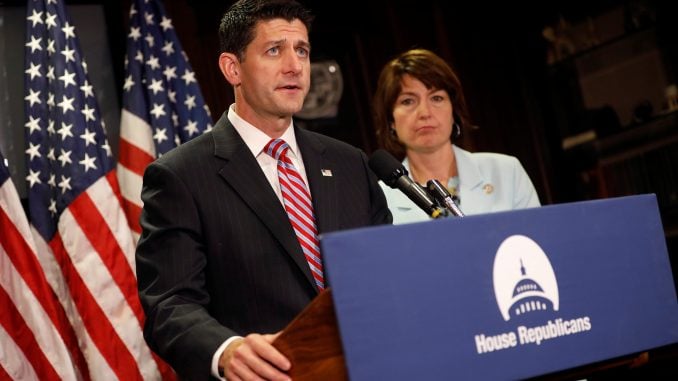
NEW YORK — The dollar stumbled on Tuesday and U.S. Treasury yields fell on a fresh setback to U.S. President Donald Trump’s domestic agenda, while U.S. and European stock indexes struggled after a heavy batch of earnings reports.
The collapse of his fellow Republicans’ push to repeal and replace Obamacare with their own healthcare bill in the U.S. Senate again raised doubts in financial markets about Trump’s ability to enact tax cuts and infrastructure spending.
The dollar fell 0.51 percent against a basket of key currencies, setting a 10-month low and extending its 2017 decline to more than 7 percent.
“It pushes out the rest of the agenda. It’s hard to do a tax reform in the style that it was campaigned on,” said Art Hogan, chief market strategist at Wunderlich Securities in New York. “The healthcare hurdle pushes everything in Trump’s agenda to 2018.””The setback for Trump is a setback for the U.S. dollar,” said Kathy Lien, managing director at BK Asset Management in New York. “I think that really casts doubt on the Trump administration’s broader strategies.”
Aside from the Trump agenda setback, there are increasing doubts about further near-term rate hikes by the Federal Reserve. Expectations for the Fed hiking interest rates this year have been pushed back to the fourth quarter, the latest Reuters poll of economists showed. A poll conducted last month predicted the Fed would raise rates by September.
Sterling fell against the dollar and euro on Tuesday, after data showed British inflation unexpectedly slowing for the first time since October last year, lowering expectations of an interest rate increase this year.
U.S. Treasury yields fell after the latest political drama in Washington, while more data pointed to benign inflation with a drop in import prices for a second straight month.
Benchmark 10-year notes last rose 12/32 in price to yield 2.2678 percent, from 2.309 percent late on Monday.
Yields across the globe rose sharply after Trump won the U.S. election in November on promises for tax reforms and infrastructure investment that were expected to boost growth and inflation in the world’s largest economy, and Republicans in the U.S. House of Representatives released a fiscal 2018 budget plan on Tuesday that could pose a major new political test for Trump’s legislative agenda by combining tax reform with controversial spending cuts.
The $4 trillion blueprint would allow an overhaul of the U.S. tax code to pass Congress without support from Democrats, along with a partial repeal of the 2010 Dodd-Frank Wall Street reform law and $203 billion in savings from mandatory federal programs including food stamps over the next decade.
Those changes and others would be combined in a single piece of legislation.
The prospect of reduced benefits for the poor and major tax cuts for businesses and individuals is already a source of infighting between House Republican conservatives who want larger spending reductions and moderates who oppose them.
In the Senate, a similar Republican battle over the repeal of Obamacare taxes on the wealthy and reduced health insurance benefits for lower-income Americans has helped sink healthcare legislation.
The spending plan, which covers the fiscal year beginning Oct. 1, aims to move the government from a $472 billion deficit in 2018 to a $9 billion budget surplus in 2027.The change is based in part on a House Budget Committee forecast of U.S. economic growth of 2.6 percent annually that assumes future changes in tax, healthcare and financial laws, as well as deregulation. The nonpartisan Congressional Budget Office has forecast economic growth of 1.9 percent from 2017 to 2027.The House budget plan would include $621.5 billion in defense spending and $511 billion on nondefense discretionary spending in 2018.The House Budget Committee is expected to approve the plan later this week and send it to the House floor for a full vote.
The plan is vital to Republican aims of overhauling the U.S. tax code while avoiding a Democratic filibuster in the Senate.
The plan instructs 11 House committees to find savings from programs and policies they oversee, including taxes, financial regulation, food stamps and federal pensions. The instructions would allow final legislation to pass the Senate with a simple majority through a parliamentary process know as reconciliation. Republicans control the Senate by a 52-48 margin. Without reconciliation, tax reform would require 60 Senate votes.



